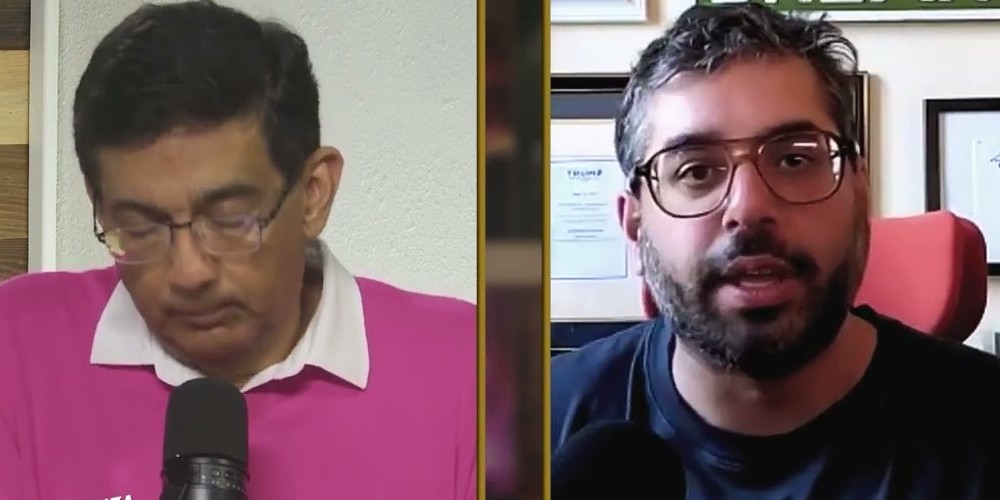The H-1B visa program has long been a topic of heated discussion. Framed as a means to bring top global talent to the United States, this program is often questioned for whether it truly delivers on that promise. National Pulse Editor Raheem Kassam recently weighed in on this issue, sharing his perspective on what the H-1B system accomplishes and where it falls short.
The Issue with “Mass Importation”
A key point raised is the distinction between attracting genuine top-tier professionals and permitting a flood of “mediocre” talent. While supporting skilled foreign workers who can contribute significantly to America’s economy, Kassam expressed concerns about the broader system being exploited. Specifically, the program often doesn’t prioritize pulling in the most qualified individuals or those in high-demand fields.
Instead, data suggests the H-1B visa frequently caters to less specialized roles. This undermines its stated purpose of addressing talent shortages in highly technical or advanced areas.
H-1B Data: Facts That Don’t Add Up
When examining H-1B visa statistics, an interesting trend emerges. Many approved applicants hold only a bachelor’s degree. A much smaller percentage possess master’s degrees, and an even tinier percentage have PhDs. This raises the question: Is the program living up to its mission of sourcing expertise that isn’t readily available in the U.S. workforce?
Kassam highlights another troubling aspect: chain migration through H-1B workers. Since 2023 alone, approximately 250,000 individuals have entered the U.S. as dependents of H-1B holders. This is a significant figure, prompting the need to reassess how the system manages these cases. Is the program’s focus being diluted by this form of migration?
The Problem of Worker Exploitation
Beyond the data, there’s a human cost tied to the H-1B system. Workers under the visa are tied to the companies sponsoring them. This restriction essentially prevents them from seeking better-paying or more fulfilling opportunities elsewhere. Many refer to this as a form of indentured servitude. It’s worth considering whether this aspect aligns with America’s broader values of economic freedom and fair labor practices.
Corporations benefit from retaining skilled labor at lower costs, while workers face limited mobility. This arrangement might serve business interests, but it casts doubt on whether the visa system’s structure respects the rights of the individuals it claims to support.
- Gold SKYROCKETED during Trump’s first term and is poised to do it again. Find out how Genesis Precious Metals can help you secure your retirement with a proper self-directed IRA backed by physical precious metals.
A Better Model: The O-1 Visa
Kassam introduces the O-1 visa as a better alternative for attracting elite global talent. Unlike the H-1B, the O-1 visa requires individuals to prove extraordinary abilities in their field. The standards are far more stringent, ensuring that only the best and brightest qualify.
By focusing on systems like the O-1 visa, the U.S. could better prioritize highly skilled workers without opening the floodgates to lower-skilled roles. This selective approach would also reduce the likelihood of worker exploitation.
Is Reform Necessary?
The debate over the H-1B visa system isn’t new, but it feels more urgent than ever. As the U.S. faces growing economic competition, being deliberate about who gains entry and why becomes increasingly important. The current structure may incentivize quantity over quality, benefiting companies at the expense of both American workers and many H-1B holders themselves.
Reform could center on stricter qualification criteria, similar to those of the O-1 visa, and reconsidering the issue of worker dependence on employers. Addressing these flaws could make the system fairer and more effective.
Conclusion
The H-1B visa program was designed to bring top talent to the United States. Yet, as the data and personal accounts reveal, it often falls short of this goal. While talented foreign professionals should be welcomed, the system should emphasize quality over quantity. Potential reforms, including a focus on more rigorous criteria like the O-1 visa, could better align the program with its original mission. For America to truly benefit from global expertise, its immigration programs must reflect fairness, meritocracy, and forward-thinking policies.
Article generated with assistance from AI.



